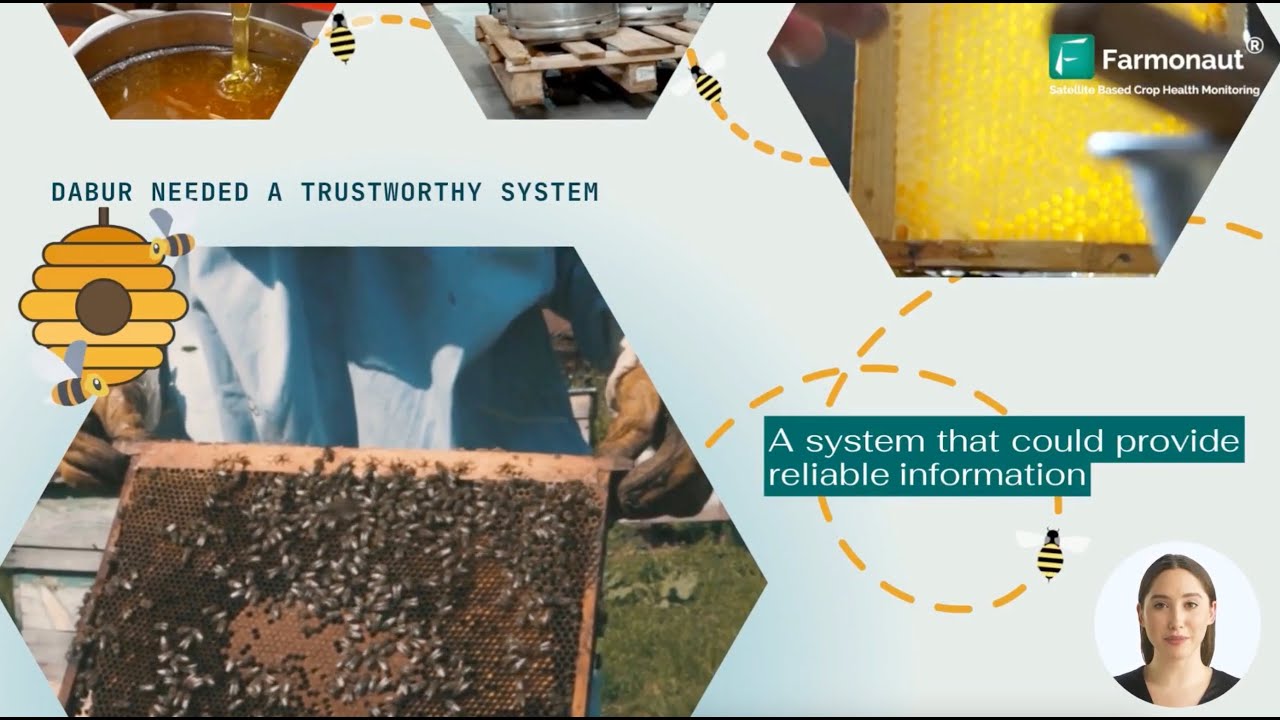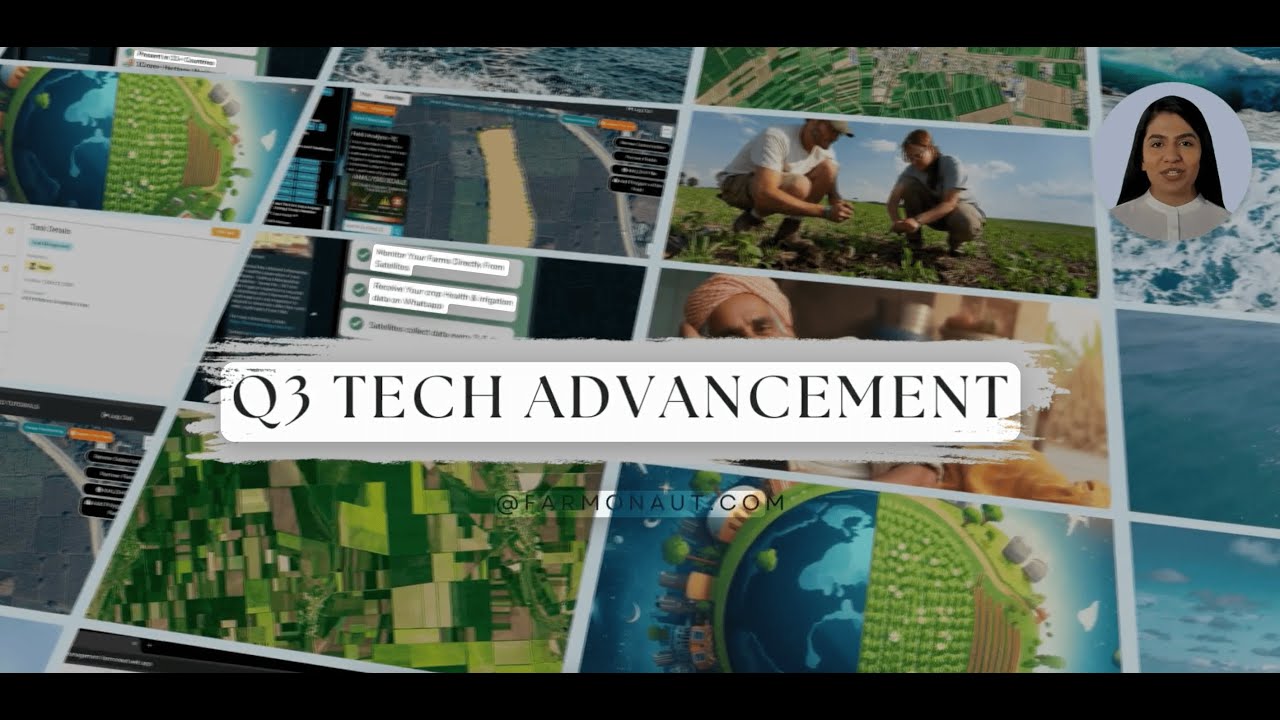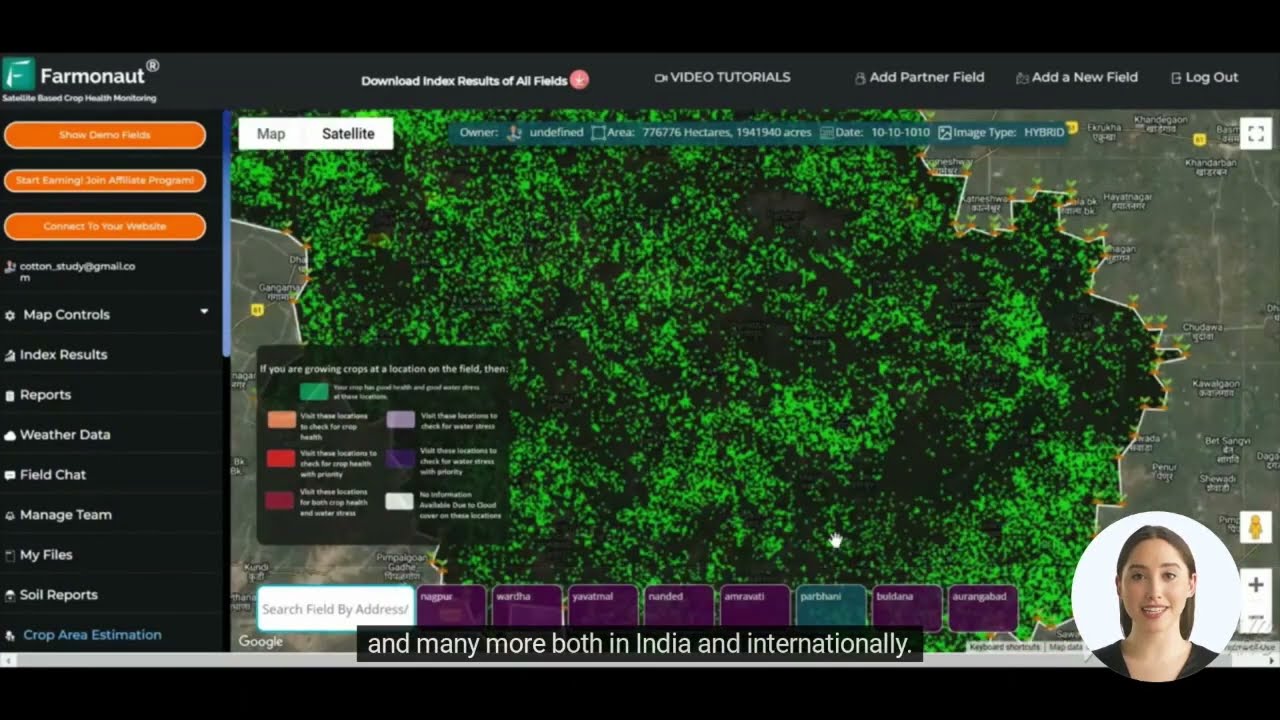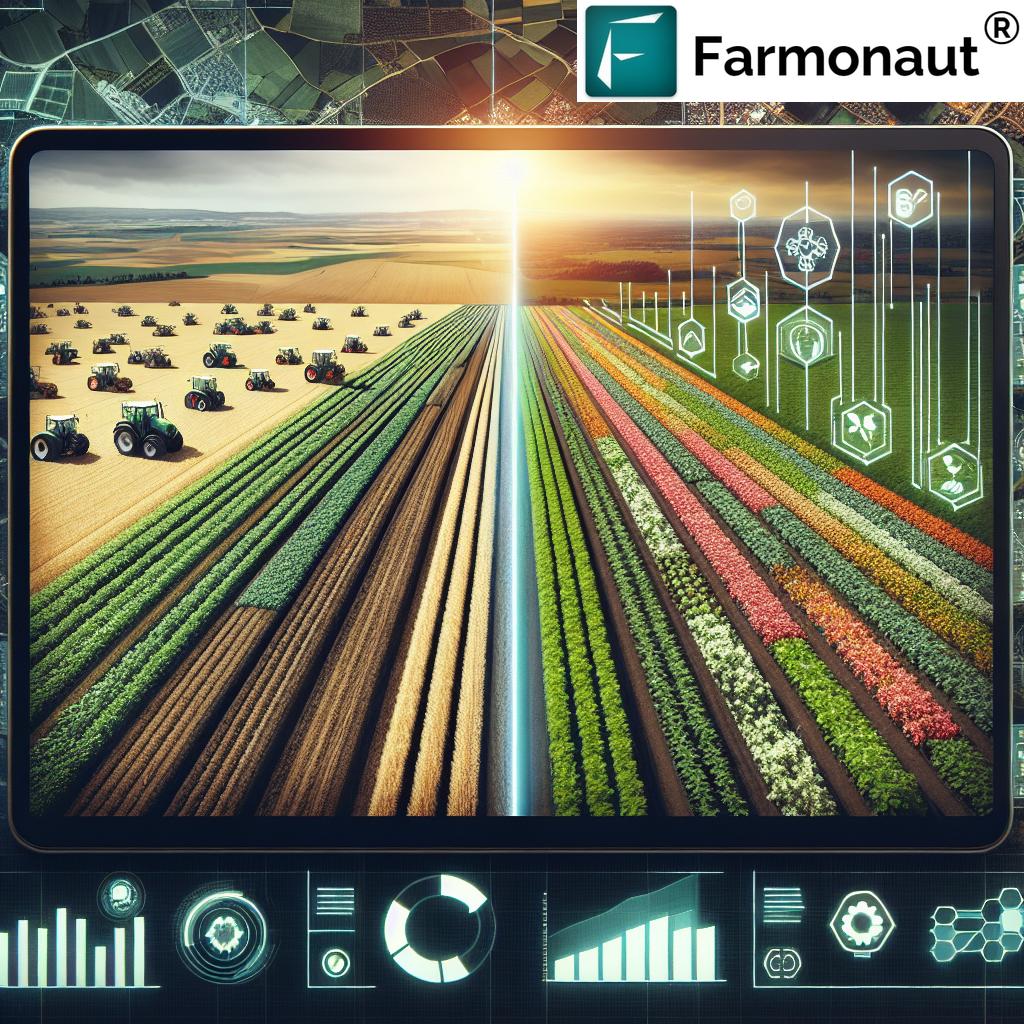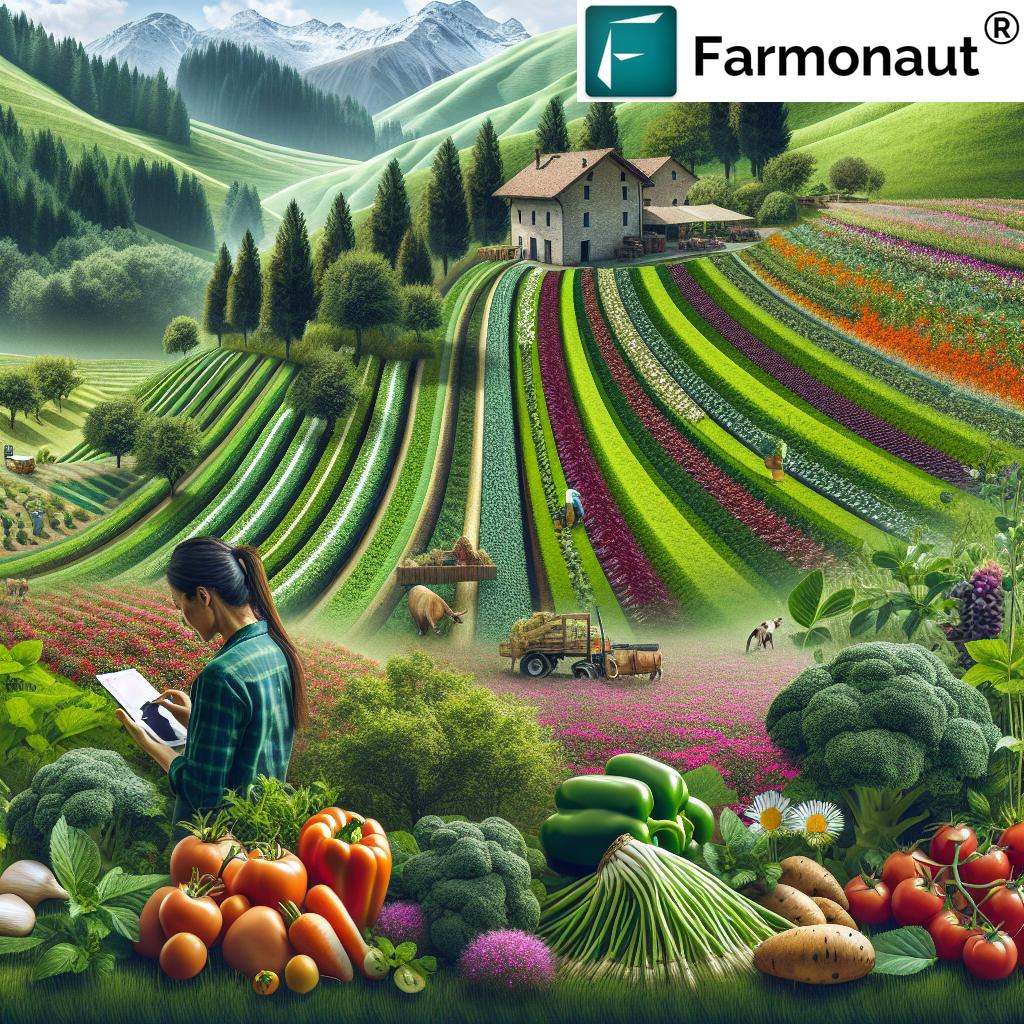Unlocking Serbia’s Agribusiness Potential: EU Funding Boosts Honey Production and Rural Development
“Serbia’s beekeeping industry received a €10 million EU loan to support rural microenterprises and honey production.”
Welcome to our comprehensive exploration of Serbia’s thriving agricultural sector, with a special focus on the burgeoning honey industry and the transformative impact of EU funding. In this blog post, we’ll delve into the latest Serbia agriculture market trends, examine the economic growth in the Western Balkans region, and highlight the exciting developments in Serbia’s beekeeping industry.
As experts in agricultural technology and remote sensing, we at Farmonaut are keenly interested in the evolving landscape of agriculture in Eastern Europe. Our satellite-based farm management solutions provide valuable insights into crop health, weather patterns, and resource management, which can be particularly beneficial for countries like Serbia as they continue to modernize and expand their agricultural sectors.

Serbia’s Agricultural Renaissance: A Sweet Success Story
Serbia’s agricultural sector has been experiencing a remarkable transformation in recent years, with the honey industry emerging as a particularly sweet success story. The country’s rich biodiversity, favorable climate, and long-standing beekeeping traditions have positioned Serbia as a significant player in the European honey market.
Let’s take a closer look at the key factors driving this agricultural renaissance:
- Diverse flora: Serbia’s varied landscapes, from lush forests to expansive meadows, provide an ideal environment for bees and contribute to the production of high-quality, flavorful honey.
- EU market access: As a candidate country for EU membership, Serbia benefits from preferential trade agreements, making its honey products more competitive in the European market.
- Government support: The Serbian government has implemented various initiatives to support beekeepers and promote the honey industry, including subsidies and training programs.
- Growing demand: Both domestic and international demand for Serbian honey has been on the rise, driven by increasing consumer awareness of its quality and health benefits.
To better understand the scope of Serbia’s honey industry and the impact of EU funding, let’s examine some key statistics:
| Serbian Honey Production and EU Funding Overview | |
|---|---|
| Honey Production | EU Funding Impact |
|
|
These impressive figures demonstrate the significant potential of Serbia’s honey industry and the positive impact of EU funding on rural development and economic growth.
EU Funding: Catalyzing Growth in Serbia’s Agribusiness Sector
The European Union has been a crucial partner in Serbia’s agricultural development, providing substantial financial support and expertise to help modernize the sector. The recent €10 million loan transaction to support rural microenterprises is just one example of the EU’s commitment to fostering growth in Serbia’s agribusiness sector.
Key aspects of EU funding for agricultural development in Serbia include:
- Rural development programs: Targeting infrastructure improvements, technology adoption, and capacity building in rural areas.
- Support for small and medium enterprises (SMEs): Providing access to finance and business development services for agribusinesses.
- Environmental sustainability initiatives: Promoting sustainable farming practices and biodiversity conservation.
- Market access support: Helping Serbian producers meet EU quality standards and access new markets.
This support from the EU is not only boosting Serbia’s agricultural sector but also contributing to the overall economic growth of the Western Balkans region. As Serbia continues its journey towards EU membership, these investments are helping to align the country’s agricultural practices with EU standards and prepare the sector for integration into the European single market.
Western Balkans Economic Growth: Serbia Leading the Way
Serbia’s impressive economic performance in recent years has positioned it as a leader in the Western Balkans region. The country’s robust GDP growth, driven in part by its thriving agricultural sector, has attracted attention from investors and policymakers alike.
“Serbia’s agriculture sector contributes significantly to its impressive GDP growth, boosting the Western Balkans economy.”
Let’s examine some key indicators of Serbia’s economic growth:
- GDP growth: Serbia has consistently outperformed many of its regional peers, with annual growth rates averaging around 4-5% in recent years.
- Foreign Direct Investment (FDI): The country has attracted significant FDI, particularly in the agricultural and food processing sectors.
- Export performance: Agricultural exports, including honey and other high-value products, have been a key driver of Serbia’s export growth.
- Employment: The agricultural sector remains a significant employer in Serbia, particularly in rural areas.

As Serbia continues to strengthen its economy and move towards EU membership, the agricultural sector will play a crucial role in driving sustainable growth and rural development.
Beekeeping Industry in Serbia: A Buzzing Success Story
The beekeeping industry in Serbia has emerged as a shining example of the country’s agricultural potential. With a long tradition of honey production and favorable natural conditions, Serbia has become a significant player in the European honey market.
Key factors contributing to the success of Serbia’s beekeeping industry include:
- Rich biodiversity: Serbia’s diverse flora, including acacia forests and meadows rich in wildflowers, provides an excellent environment for honey production.
- Traditional expertise: Serbian beekeepers have centuries of experience, passing down knowledge and techniques through generations.
- Quality products: Serbian honey is known for its high quality and unique flavors, making it popular both domestically and internationally.
- Government support: The Serbian government has implemented various programs to support beekeepers, including subsidies and educational initiatives.
The recent EU funding for rural microenterprises is expected to further boost the beekeeping industry by providing financial support for equipment upgrades, training programs, and market access initiatives.
Serbian Honey Production and Pricing: A Sweet Economic Indicator
The production and pricing of honey in Serbia serve as important economic indicators, reflecting both the health of the agricultural sector and broader market trends. Let’s take a closer look at the current state of Serbian honey production and pricing:
- Production volume: Serbia produces between 7,000 and 9,000 tons of honey annually, with potential for further growth.
- Export value: Honey exports contribute €15-20 million to Serbia’s economy each year.
- Domestic market: Local honey prices range from €5-7 per kilogram, making it accessible to Serbian consumers.
- Export market: Serbian honey fetches higher prices in international markets, typically €8-10 per kilogram.
- Premium varieties: Certain mono-floral honey types, such as acacia honey, command even higher prices due to their unique qualities.
The pricing of Serbian honey reflects its high quality and the growing demand for natural, sustainable food products in both domestic and international markets.
Agricultural Investment Opportunities in the Balkans
The Balkan region, with Serbia at its forefront, presents numerous agricultural investment opportunities for both domestic and foreign investors. The combination of rich natural resources, skilled labor, and increasing EU support makes the region an attractive destination for agribusiness investments.
Some key investment opportunities in Serbian agriculture include:
- Organic farming: Growing demand for organic products presents opportunities for investment in organic fruit, vegetable, and grain production.
- Food processing: Investments in modern processing facilities can add value to Serbia’s agricultural products and boost exports.
- Agricultural technology: There’s significant potential for introducing advanced farming technologies, including precision agriculture solutions like those offered by Farmonaut.
- Beekeeping and honey production: The growing honey industry offers opportunities for investment in production facilities, processing equipment, and export-oriented businesses.
Investors looking to capitalize on these opportunities can benefit from various support mechanisms, including EU pre-accession funds, government incentives, and partnerships with local producers.
Sustainable Farming Practices in Serbia: A Path to Long-Term Success
As Serbia continues to develop its agricultural sector, there’s an increasing focus on adopting sustainable farming practices. This approach not only aligns with EU environmental standards but also ensures the long-term viability of the country’s agricultural resources.
Key aspects of sustainable farming in Serbia include:
- Organic production: Serbia has seen significant growth in organic farming, particularly in fruit and vegetable production.
- Integrated pest management: Adopting biological control methods and reducing reliance on chemical pesticides.
- Water conservation: Implementing efficient irrigation systems and promoting water-saving techniques.
- Soil health management: Encouraging crop rotation, cover cropping, and reduced tillage to maintain soil fertility.
- Biodiversity preservation: Protecting natural habitats and promoting diverse crop systems to support pollinator populations, including bees.
These sustainable practices not only benefit the environment but also contribute to the production of high-quality agricultural products, including honey, that are increasingly valued in international markets.
Balkan Regional Agricultural Cooperation: Strengthening Ties for Growth
Agricultural cooperation among Balkan countries is becoming increasingly important as the region seeks to compete in the global market and prepare for eventual EU integration. Serbia, as a leader in agricultural development in the Western Balkans, plays a crucial role in fostering this regional cooperation.
Key areas of Balkan regional agricultural cooperation include:
- Knowledge sharing: Exchanging best practices in sustainable farming, pest management, and quality control.
- Joint marketing initiatives: Promoting Balkan agricultural products, including honey, in international markets.
- Research and development: Collaborating on agricultural research projects and technology adoption.
- Cross-border trade: Streamlining procedures for agricultural trade within the region.
- Environmental protection: Coordinating efforts to address shared environmental challenges, such as climate change adaptation in agriculture.
This regional cooperation not only benefits individual countries but also strengthens the Balkans’ position as an important agricultural region within Europe.
Agribusiness Loans in Eastern Europe: Fueling Growth and Innovation
Access to finance is crucial for the development and modernization of the agricultural sector in Eastern Europe, including Serbia. Agribusiness loans play a vital role in supporting farmers, processors, and rural entrepreneurs as they seek to expand their operations and adopt new technologies.
Key features of agribusiness loans in the region include:
- Flexible terms: Loan products tailored to the seasonal nature of agricultural production.
- Investment focus: Financing for equipment purchases, infrastructure improvements, and technology adoption.
- EU-backed guarantees: Many loan programs benefit from EU support, reducing risk for lenders and improving access for borrowers.
- Technical assistance: Loan packages often include advisory services to help borrowers improve their business operations.
These financial tools are essential for supporting the growth and competitiveness of Eastern European agriculture, including Serbia’s thriving honey industry.
The Role of Technology in Serbian Agriculture
As Serbia’s agricultural sector continues to modernize, technology is playing an increasingly important role in improving productivity, sustainability, and competitiveness. Farmonaut’s satellite-based farm management solutions are particularly relevant in this context, offering Serbian farmers and agribusinesses valuable tools for optimizing their operations.
Key technological advancements in Serbian agriculture include:
- Precision agriculture: Using satellite imagery and GPS technology to optimize crop management and resource use.
- Data-driven decision making: Leveraging big data and AI to inform planting, harvesting, and marketing decisions.
- Smart irrigation systems: Implementing water-saving technologies to improve efficiency and crop yields.
- Blockchain for traceability: Enhancing supply chain transparency and product authenticity, particularly important for high-value products like honey.
By embracing these technologies, Serbian agriculture is positioning itself for long-term success in the competitive European and global markets.
Promoting Local Products: Serbia’s Strategy for Success
Serbia has been implementing a strong strategy to promote its local agricultural products, including honey, both domestically and internationally. This approach not only supports local producers but also contributes to the country’s economic growth and rural development.
Key elements of Serbia’s product promotion strategy include:
- Geographical indications: Registering and promoting products with protected geographical indications to highlight their unique qualities.
- Quality certification schemes: Implementing rigorous quality control measures to ensure consistency and build consumer trust.
- International trade fairs: Participating in major food and agriculture exhibitions to showcase Serbian products to global buyers.
- Digital marketing: Leveraging online platforms and social media to reach new markets and connect with consumers.
- Culinary tourism: Promoting Serbian food culture, including honey-based products, as part of the country’s tourism offerings.
These efforts have helped raise the profile of Serbian agricultural products, including honey, in international markets and have contributed to the sector’s impressive export performance.
Future Outlook: Serbia’s Agricultural Potential
As we look to the future, Serbia’s agricultural sector, particularly its honey industry, shows tremendous potential for continued growth and development. With ongoing EU support, increasing adoption of sustainable practices, and growing global demand for high-quality food products, Serbia is well-positioned to become a major player in European agriculture.
Key factors that will shape the future of Serbian agriculture include:
- EU integration: Continued progress towards EU membership will open new markets and bring additional support for agricultural development.
- Climate change adaptation: Implementing strategies to mitigate the impacts of climate change on agriculture, including beekeeping.
- Technological innovation: Further adoption of advanced agricultural technologies, including precision farming and AI-driven advisory systems.
- Value-added production: Increasing focus on processing and creating high-value products from raw agricultural outputs.
- Sustainable practices: Expanding organic production and other environmentally friendly farming methods to meet growing consumer demand.
By capitalizing on these opportunities and addressing challenges, Serbia can continue to unlock its agribusiness potential and solidify its position as a key agricultural producer in the region.
Conclusion: A Sweet Future for Serbian Agriculture
Serbia’s agricultural sector, with its thriving honey industry at the forefront, is experiencing a remarkable transformation. Driven by EU funding, technological innovation, and a commitment to sustainable practices, Serbian agriculture is poised for continued growth and success.
As we’ve explored in this blog post, the combination of traditional expertise, rich natural resources, and modern approaches to farming and marketing is creating exciting opportunities for Serbian farmers, entrepreneurs, and investors. The country’s success in the honey industry serves as a sweet example of the potential that exists across the agricultural sector.
At Farmonaut, we’re excited to see how technology continues to shape the future of agriculture in Serbia and the broader Balkan region. Our satellite-based farm management solutions can play a crucial role in supporting the modernization and optimization of agricultural practices, contributing to increased productivity, sustainability, and profitability.
As Serbia continues on its path of agricultural development and EU integration, we look forward to witnessing the country’s emergence as a key player in European agriculture, setting an example for sustainable growth and rural development in the region.
FAQ Section
- Q: What makes Serbian honey unique?
A: Serbian honey is known for its high quality, diverse flavors due to the country’s rich biodiversity, and traditional beekeeping methods. Popular varieties include acacia, linden, and meadow honey. - Q: How is EU funding supporting Serbia’s agricultural sector?
A: EU funding provides financial support for rural development, modernization of farming practices, support for small and medium enterprises, and initiatives to improve market access and meet EU quality standards. - Q: What are the main challenges facing Serbian agriculture?
A: Key challenges include adapting to climate change, modernizing infrastructure, meeting EU regulatory standards, and improving access to finance for small farmers. - Q: How is technology being used in Serbian agriculture?
A: Technology adoption in Serbian agriculture includes precision farming techniques, satellite-based crop monitoring, smart irrigation systems, and blockchain for supply chain traceability. - Q: What opportunities exist for foreign investors in Serbian agriculture?
A: Investment opportunities include organic farming, food processing, agricultural technology implementation, and export-oriented businesses, particularly in high-value sectors like honey production.
For those interested in leveraging technology to optimize agricultural operations in Serbia and beyond, Farmonaut offers a range of solutions:
Explore our API for developers:
Farmonaut API
API Developer Docs





